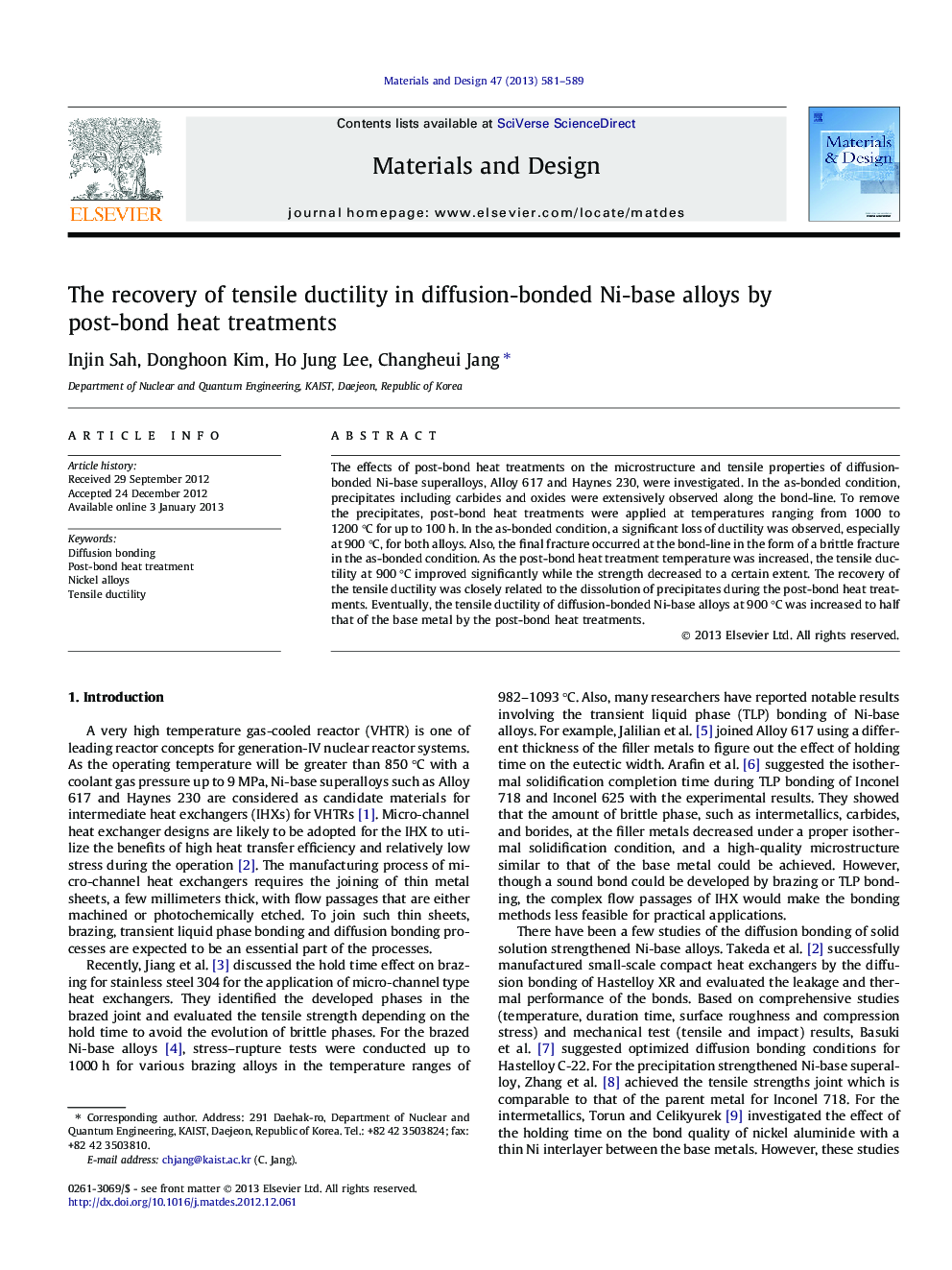| Article ID | Journal | Published Year | Pages | File Type |
|---|---|---|---|---|
| 830088 | Materials & Design (1980-2015) | 2013 | 9 Pages |
The effects of post-bond heat treatments on the microstructure and tensile properties of diffusion-bonded Ni-base superalloys, Alloy 617 and Haynes 230, were investigated. In the as-bonded condition, precipitates including carbides and oxides were extensively observed along the bond-line. To remove the precipitates, post-bond heat treatments were applied at temperatures ranging from 1000 to 1200 °C for up to 100 h. In the as-bonded condition, a significant loss of ductility was observed, especially at 900 °C, for both alloys. Also, the final fracture occurred at the bond-line in the form of a brittle fracture in the as-bonded condition. As the post-bond heat treatment temperature was increased, the tensile ductility at 900 °C improved significantly while the strength decreased to a certain extent. The recovery of the tensile ductility was closely related to the dissolution of precipitates during the post-bond heat treatments. Eventually, the tensile ductility of diffusion-bonded Ni-base alloys at 900 °C was increased to half that of the base metal by the post-bond heat treatments.
► Post-bond heat treatments recovered ductility of diffusion-bonded Ni-base alloys. ► Recovery of ductility was caused by the dissolution of precipitates on the bond-line. ► In as-bonded condition, final failure occurred along the bond-line in brittle manner. ► After post-bond HT, final failure was at base metal at RT, but near bond-line at 900 °C.
